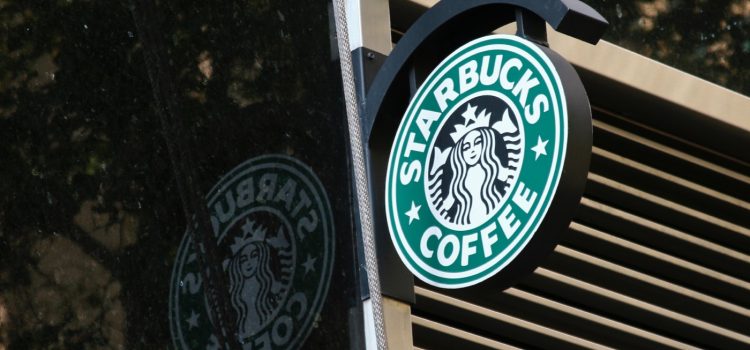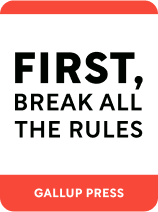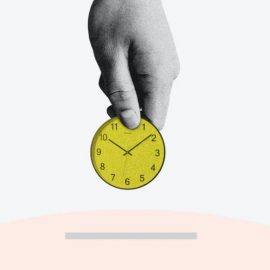

This article is an excerpt from the Shortform book guide to "Onward" by Howard Schultz. Shortform has the world's best summaries and analyses of books you should be reading.
Like this article? Sign up for a free trial here.
What’s the Starbucks business model? What business principles did Howard Schultz bring to Starbucks?
As CEO, Schultz made a multitude of decisions that helped Starbucks survive the financial crisis. In total, he made three turnaround strategies: overhauling Starbucks’ management, improving its financial standing, and enhancing the coffeehouse experience.
Let’s discuss these decisions and how they left Starbucks in good standing by the end of 2009.
1. How Schultz Overhauled Starbucks’ Management
One of Schultz’s initial turnaround strategies was to completely overhaul the company’s management. In this section, we’ll dive into the three major changes Schultz made to Starbucks’s business model to accomplish this strategy: hiring new executives, securing emotional buy-in from executives and managers, and reaffirming key values in Starbucks’ management strategy.
Hiring New Executives
Schultz explains that he hired several new executives during his tenure as CEO, some promoted from within and some brought in from outside organizations. He carefully selected these new hires on the basis that they shared Starbucks values, could provide a much-needed fresh perspective on Starbucks’ problems, and would work tirelessly to find solutions. Schultz also explains that hiring new executives sent an important message to external stakeholders. For example, when the chief financial officer resigned shortly before an important presentation to financial analysts, Schultz promoted the senior vice president of global marketing to take over the position, which he felt communicated that money-making changes were underway.
Securing Emotional Buy-In From Executives and Managers
Schultz explains that under his direction, Starbucks held several important conferences for executives and managers that were intended to secure their emotional buy-in. It was important to Schultz that every Starbucks leader truly believed in the company’s unique value and potential for greatness because feeling connected to their work would inspire peak performance. Many of these conferences were expensive, and Schultz experienced pressure to cancel them due to Starbucks’ financial troubles, but he refused because he believed their potential to inspire was worth the cost.
The most notable conference Schultz mentions was a $30 million managers’ conference held in New Orleans, Louisiana. The conference took place in 2008, three years after the powerful Hurricane Katrina devastated the area, its inhabitants, and its business scene. Schultz says that in his eyes, Starbucks and New Orleans were in similar situations, since both were recovering from major disasters. The conference featured several galleries underscoring Starbucks’ value (for example, one focused on employee-customer connections), and attendees spent a total of 50,000 combined hours volunteering to help serve and rebuild the local community. Schultz also asked his friend, the musician Bono, to introduce Starbucks’ partnership with his nonprofit (RED), which provides AIDS relief in Africa.
Reaffirming Key Values in Starbucks’ Management Strategy
By hiring new executives who shared Schultz’s vision for Starbucks and securing executives’ and managers’ emotional buy-in, Schultz ensured that key players would enact the company’s key values (uplifting humanity by providing unique value to stakeholders). Schultz also reaffirmed these values by containing Starbucks’ scope. For example, he briefly considered a deal with the creators of the video game World of Warcraft to capture the young adult male market. But the feelings the game evoked didn’t align with Starbucks’ core values. Instead, he pursued partnerships with better-aligned creators, whose products Starbucks customers would have exclusive access to when they were inside the company’s stores.
2. How Schultz Improved Starbucks’ Financial Standing
Schultz’s second initial turnaround strategy was to improve Starbucks’ financial standing. He achieved this by focusing on two objectives: frugalizing operations and shifting in focus from expansion to innovation. Let’s explore these changes in more detail.
Frugalizing Operations
Schultz explains that by the second quarter of 2008, Starbucks was in dire straits as it experienced a historic low in sales earnings. Starbucks needed to cut costs immediately, so he asked a new executive to evaluate the performance of US stores. This executive decided to close 600 underperforming US locations, many of which had been opened haphazardly (without adequate consideration of revenue potentials) in the last three years. Starbucks also laid off 550 corporate employees to cut costs. Schultz explains that in both cases, the company endeavored to smoothly transition as many employees as possible to other roles; if that wasn’t possible, the employees received professional assistance or generous severance packages.
By the end of 2008, profits were still down and there was no sign of economic recovery, so Starbucks’ board asked Schultz to make further cuts. Internal research showed that Starbucks was hemorrhaging money due to in-store inefficiencies, like too much food waste and wasteful labor scheduling procedures, as well as inefficient supply chain operations. In response, Schultz and his executive team made $400 million in cuts. They didn’t want to take such an aggressive approach but did so at the board’s behest. Schultz explains that this turned out to be a good call because it reassured analysts at Starbucks’ next analyst meeting, which had a slightly positive impact on Starbucks’ stock value (though it still loomed near its all-time low).
Shifting in Focus From Expansion to Innovation
Schultz says that the decision to close hundreds of locations underscored the problem with Starbucks’ growth strategy: Expanding the company’s geographic reach was not always good for business. This meant he needed to nurture a more effective strategy to reach new customers: innovation. Starbucks created three new products: a slushie-like drink called Sorbetto, a smoothie called Vivanno, and an instant coffee called Via. Schultz expected Sorbetto to revitalize sales and solve Starbucks’ problems, but its high production costs and sugar content led to its failure. Vivanno was slightly more successful because it was healthier, but it launched at the same time as Sorbetto and didn’t get the marketing attention it deserved.
Schultz explains that the instant coffee Via, developed for sale in grocery stores, was harder to roll out than Sorbetto and Vivanno. This was partially because he received pushback from other executives who feared that selling an instant coffee would degrade their brand (since instant coffee is notoriously inferior to brewed coffee and Starbucks prides itself on quality). But Schultz’s data told him that instant coffee could be immensely profitable and help Starbucks reach new customers without sacrificing quality, so he persisted. Schultz explains that Via was immensely successful in three ways: Critics liked it and it sold well immediately, it revitalized the company’s entrepreneurial spirit, and it proved innovation was a wise growth strategy.
3. How Schultz Enhanced Starbucks’ Coffeehouse Experience
Schultz’s third turnaround strategy was to enhance Starbucks’ coffeehouse experience. To accomplish this, Schultz made changes in four key areas: he strengthened menu offerings, improved customer service, polished store design and operations, and renewed social and environmental commitments. Let’s explore each of those areas now.
Strengthened Menu Offerings
Schultz says he experienced pressure from investors and other financial experts to cut corners on coffee quality to cope with the financial crisis, but he was unwilling to make that concession because high-quality coffee is the most fundamental basis of Starbucks operations, which sets it apart from other coffeehouse companies. However, in 2007, Starbucks coffee was receiving poor ratings, with one important organization ranking it behind McDonald’s coffee. Schultz says this occurred for two reasons: Americans were unaccustomed to such flavorful coffee, and the type of coffee brewed in each store changed daily, which made customers feel that the quality of Starbucks coffee was inconsistent.
To address this issue, Schultz greenlit the development of a new coffee blend that would be more palatable to the average consumer and be served daily at every Starbucks location—Pike Place Roast. He also renewed an old tradition: Employees would start grinding the beans in stores, instead of having coffee grounds shipped to the stores (a decision that had been made to speed up in-store operations and therefore maximize profits). This would improve the coffee’s taste by preserving its freshness for as long as possible. The launch of Pike Place Roast was successful, and it became a top-selling coffee within three months of its initial release.
Improved Customer Service
Schultz explains that when the email he wrote to executives detailing Starbucks’ problems was leaked in 2007, it alerted him to another concern: Starbucks was behind the times. The email exploded on social media, but Starbucks had no way to participate in that conversation because it had no social media presence at the time. To open up communication with customers, Schultz directed the company to take two initiatives: Joining social media and creating a website called My Starbucks Idea, where customers could submit their ideas to make Starbucks better and vote on which ideas they liked best.
The My Starbucks Idea submissions told Schultz that customers, who were also experiencing the effects of the financial crisis, wanted more bang for their buck when it came to their Starbucks purchases. Starbucks had faced similar criticisms from the media, which cast Starbucks as a symbol of millennial extravagance that was inappropriate for the times. To address these issues, Starbucks rolled out customer rewards programs that gave customers access to free items and discounts, which helped incentivize in-store spending despite the struggling economy.
Polished Store Design and Operations
Schultz explains that in addition to its lack of a social media presence, Starbucks was behind in other ways. For one thing, it was using outdated technology that was clunky and cumbersome, which slowed down customer service and impeded employees from forming relationships with customers. To address this issue, Schultz gave each store a new laptop and acquired two new machines: the semiautomatic Clover, which created flavorful cups of brewed coffee and could be used to expand Starbucks’ repertoire of customizable brewed coffee drinks, and the semiautomatic Mastrena, which created espresso drinks and was sized so that employees could more easily interact with customers while making their drinks.
Schultz was also displeased with the design of Starbucks stores because they didn’t create the warm atmosphere needed for a successful third place. To fix this, Schultz rehired a former head of store development whom he considered a true innovator to redesign Starbucks stores. The new designs were centered around sustainability and featured eco-friendly elements like energy-efficient lighting and salvaged wood. Schultz also opened two experimental coffee shops that were as different as possible from the Starbucks brand in every way (including store names, menus, operating procedures, and designs). This enabled Starbucks to experiment with potential future directions in a safe way, without making major changes to Starbucks’ brand.
Renewed Social and Environmental Commitments
Schultz explains that one reason customers had been drawn to Starbucks throughout its history was its commitment to social and environmental responsibility. To stay relevant with regard to these issues, Schultz renewed Starbucks’ commitments to Conservation International (a nonprofit dedicated to fighting climate change) and Fairtrade (which encourages ethical supply chain practices).
Starbucks also took on two social initiatives. First, the company leveraged its new social media presence to promote an advertising campaign offering free coffee for anyone who voted in the 2008 presidential election, in which only half of eligible voters were predicted to participate. (Due to voting laws, Starbucks had to change their plan and give free coffee to anyone who asked on election day, not just voters.) As a result, more than twice the usual number of customers entered Starbucks stores that day.

———End of Preview———
Like what you just read? Read the rest of the world's best book summary and analysis of Howard Schultz's "Onward" at Shortform.
Here's what you'll find in our full Onward summary:
- Why Starbucks CEO Howard Schultz left and later returned to the company
- Schultz’s three-part strategy that saved Starbucks from potential ruin
- Why millions of people love Starbucks’ coffeehouse experience






